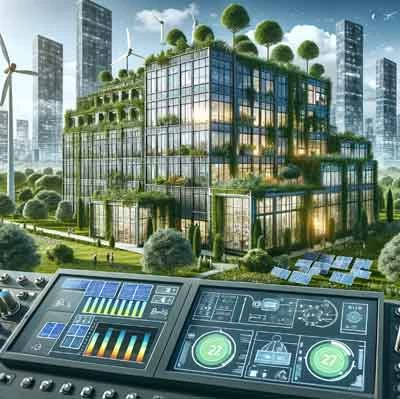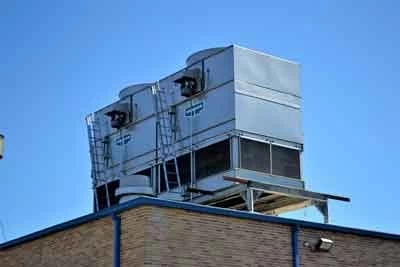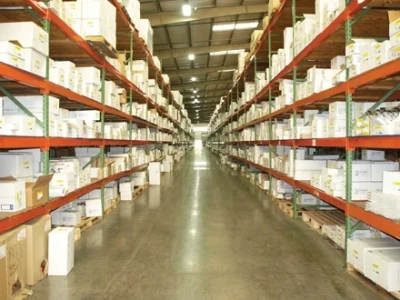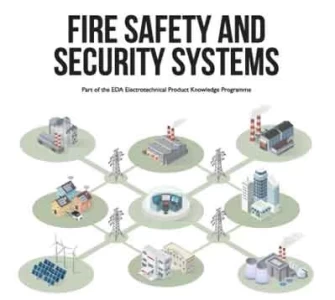Building a Sustainable Future: Integrating BAS with Renewable Energy

Building Automation Systems (BAS) have revolutionized how we manage buildings, optimizing energy consumption and improving occupant comfort. However, with a growing focus on sustainability, BAS are evolving to integrate with renewable energy sources, paving the way for a more environmentally friendly future. This article explores the benefits of integrating BAS with renewable energy, examines the technical considerations, and discusses the types of renewable energy sources commonly employed in such systems.
Building a Sustainable Future: Benefits of Integration
Integrating BAS with renewable energy sources offers several advantages for building managers and the environment:
Reduced Reliance on Fossil Fuels: Integrating renewable energy sources like solar and wind power into BAS allows buildings to generate their own clean energy, reducing reliance on traditional fossil fuel-based grid power. This not only contributes to lower carbon emissions but also mitigates the impact of fluctuating energy prices.
Increased Energy Efficiency: BAS can optimize energy consumption by dynamically adjusting building systems based on real-time energy production from renewable sources. For example, BAS can adjust HVAC settings or lighting levels based on solar photovoltaic (PV) generation, maximizing the utilization of clean energy.
Demand Response Management: BAS can participate in demand response programs offered by utility companies. These programs incentivize buildings to reduce energy consumption during peak demand periods. By integrating renewable energy sources, BAS can prioritize self-generated clean energy during peak demand, reducing reliance on the grid and potentially qualifying for financial rewards.
Improved Building Performance: BAS with renewable energy integration can contribute to improved building performance metrics like LEED certification. These certifications recognize a building's commitment to sustainability and can enhance a building's appeal to tenants and investors.
Cost Savings: While initial investment costs for renewable energy systems may be higher, the long-term savings on energy bills can be significant. Additionally, participation in demand response programs can generate financial rewards, further offsetting initial investment costs.
Technical Considerations for Successful Integration
Integrating BAS with renewable energy sources requires careful planning and technical considerations:
System Design and Integration: BAS needs to be designed to accommodate the integration of renewable energy sources. This may involve upgrading existing systems or implementing data acquisition systems to collect real-time data from renewable energy generation units. Additionally, communication protocols need to be established to ensure seamless interaction between BAS and the renewable energy system.
Data Management and Analytics: BAS must be able to collect, analyze, and utilize data from both renewable energy production and building energy consumption. This allows for intelligent control strategies that optimize energy usage based on real-time availability of clean energy.
Energy Storage Integration: Energy storage systems can significantly improve the effectiveness of integrating renewable energy into BAS. Batteries or other storage solutions can store excess energy generated during peak production periods for use when renewable energy availability is low. This reduces reliance on the grid and ensures consistent power supply.
Cybersecurity Measures: Integration with the grid and the use of internet-connected devices within renewable energy systems introduce new cybersecurity risks. Implementing robust cybersecurity measures like firewalls, secure communication protocols, and data encryption is crucial to protect BAS and renewable energy systems from unauthorized access and potential cyberattack.
Types of Renewable Energy Sources for BAS Integration
Several renewable energy sources can be integrated with BAS:
Solar Photovoltaics (PV): Solar PV systems convert sunlight into electricity. BAS can utilize real-time solar energy generation data to adjust building energy consumption accordingly. For example, prioritizing the use of solar power for building operations during peak production hours.
Wind Power: Wind turbines can be used to generate electricity in suitable locations. BAS can integrate with wind energy systems to adjust building energy consumption based on wind availability, optimizing resource utilization.
Biomass: Biomass systems utilize organic materials like wood chips or agricultural waste to generate electricity or heat. BAS can integrate with biomass systems to optimize boiler operation and ensure efficient energy production from this renewable source.
Geothermal Energy: Geothermal systems utilize heat from the Earth's core to generate electricity or provide space heating and cooling. BAS can integrate with geothermal systems to optimize energy use based on real-time heat production data.
Micro-hydropower: Micro-hydropower systems utilize small-scale hydropower generation from moving water sources. While suitable for specific locations with flowing water sources, BAS can integrate with these systems to utilize this clean energy source efficiently.
Beyond Integration: The Road Ahead
The integration of BAS with renewable energy sources represents a significant leap forward in sustainable building management. While technical considerations and initial investment costs require careful evaluation, the long-term benefits for the environment and building operations are undeniable. As technology advancements continue, we can expect further innovations in energy storage solutions, communication protocols, and data analytics capabilities. These advancements will not only simplify BAS integration with renewable energy but will also pave the way for even more efficient and sustainable building operations. Additionally, the growing focus on smart cities and grid modernization will provide further opportunities for BAS and renewable energy to work synergistically. By fostering collaboration between building automation specialists, renewable energy developers, and utility companies, the future holds immense potential for a more sustainable built environment.
Building a Greener Future, One BAS Integration at a Time
The integration of BAS with renewable energy represents a paradigm shift in how we manage buildings. This convergence empowers building managers to reduce reliance on fossil fuels, optimize energy consumption, and contribute to a more sustainable future. By embracing these advancements and overcoming technical challenges, the building automation industry can play a pivotal role in building a greener future, one BAS integration at a time.









